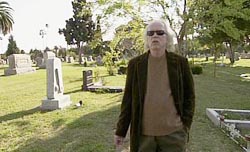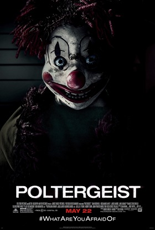
 To enjoy the remake of Poltergeist — and yes, it can be done — you have to distance yourself from feelings over the 1982 original, a classic of contemporary horror cinema. Granted, that’s difficult to do when the new version keeps calling back to the original version, such as when the families discuss the neighborhood being built over a former cemetery: “At least it isn’t an Indian burial ground!”
To enjoy the remake of Poltergeist — and yes, it can be done — you have to distance yourself from feelings over the 1982 original, a classic of contemporary horror cinema. Granted, that’s difficult to do when the new version keeps calling back to the original version, such as when the families discuss the neighborhood being built over a former cemetery: “At least it isn’t an Indian burial ground!”
And at least director Gil Kenan — moving fluidly from an animated Monster House to a live-action one — tries to do enough things differently while still bearing resemblance to a beloved film. Whereas the Freelings were pot-smoking Reaganites, the Bowens (Moon’s Sam Rockwell and The Watch’s Rosemarie DeWitt) are jobless, overextended victims of the housing collapse and Great Recession. They’ve barely settled with their kids in a new-to-them home in the suburbs when their youngest, Madison (Kennedi Clements, Jingle All the Way 2), starts talking to the bedroom closet. The “TV people” have become “lost people,” and not only do these spirits fill the basement ankle-deep in Amityville-brand sewage and fuck with the WiFi signal (every child’s worst nightmare), but also abscond with Madison (every parent’s worst nightmare), sucking her into a ghostly netherworld.
 Standing in for — and nearly 2 feet taller than — Zelda Rubinstein is Jared Harris (Sherlock Holmes: A Game of Shadows) as the paranormal professional called in to assist the desperate family; updated for these times, he’s the reality-TV star of a series called Haunted House Cleaners, for which his sign-off of “This house is clean!” has become such a catchphrase, it has earned its own hashtag. He also uses a drone for this assignment. Such concessions for the Internet age are inevitable and goofy, but forgivable if the movie delivered jolts. It does — not in the style of cul-de-sac camaraderie established by director Tobe Hooper and screenwriter/producer Steven Spielberg in ’82 — but in the carnival-spookshow manner associated with Sam Raimi’s Ghost House Pictures banner, under which this Poltergeist was unleashed, promising a good time vs. great art. I actually found myself tensing up during the trip through the other dimension, and a bit with a drill is the kind of mischievous menace Raimi himself is keen on employing in his own scare films.
Standing in for — and nearly 2 feet taller than — Zelda Rubinstein is Jared Harris (Sherlock Holmes: A Game of Shadows) as the paranormal professional called in to assist the desperate family; updated for these times, he’s the reality-TV star of a series called Haunted House Cleaners, for which his sign-off of “This house is clean!” has become such a catchphrase, it has earned its own hashtag. He also uses a drone for this assignment. Such concessions for the Internet age are inevitable and goofy, but forgivable if the movie delivered jolts. It does — not in the style of cul-de-sac camaraderie established by director Tobe Hooper and screenwriter/producer Steven Spielberg in ’82 — but in the carnival-spookshow manner associated with Sam Raimi’s Ghost House Pictures banner, under which this Poltergeist was unleashed, promising a good time vs. great art. I actually found myself tensing up during the trip through the other dimension, and a bit with a drill is the kind of mischievous menace Raimi himself is keen on employing in his own scare films.
None of the three Bowen children makes an impression beyond middling, but Rockwell and particularly DeWitt (whose ponytail I could watch flop for days) are ideal and believable as the shell-shocked and overstressed marrieds just doing the best that they can. That includes enduring the questions of their middle child (Kyle Catlett, TV’s The Following): “Why would why somebody have a box of clowns?” Clearly the kid never saw the first one! —Rod Lott

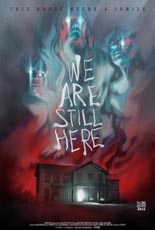
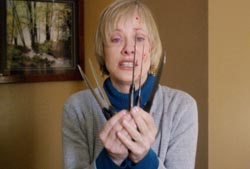
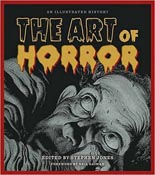
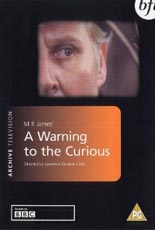


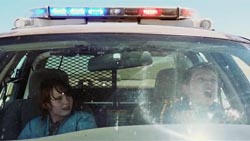
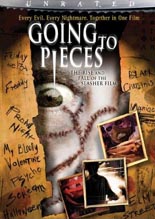
 Slasher films are targets of scorn from critics and other high-minded pillars of the community, yet a nonstop source of fun for movie buffs. Adam Rockoff’s 2002 critical study,
Slasher films are targets of scorn from critics and other high-minded pillars of the community, yet a nonstop source of fun for movie buffs. Adam Rockoff’s 2002 critical study, 